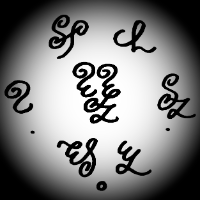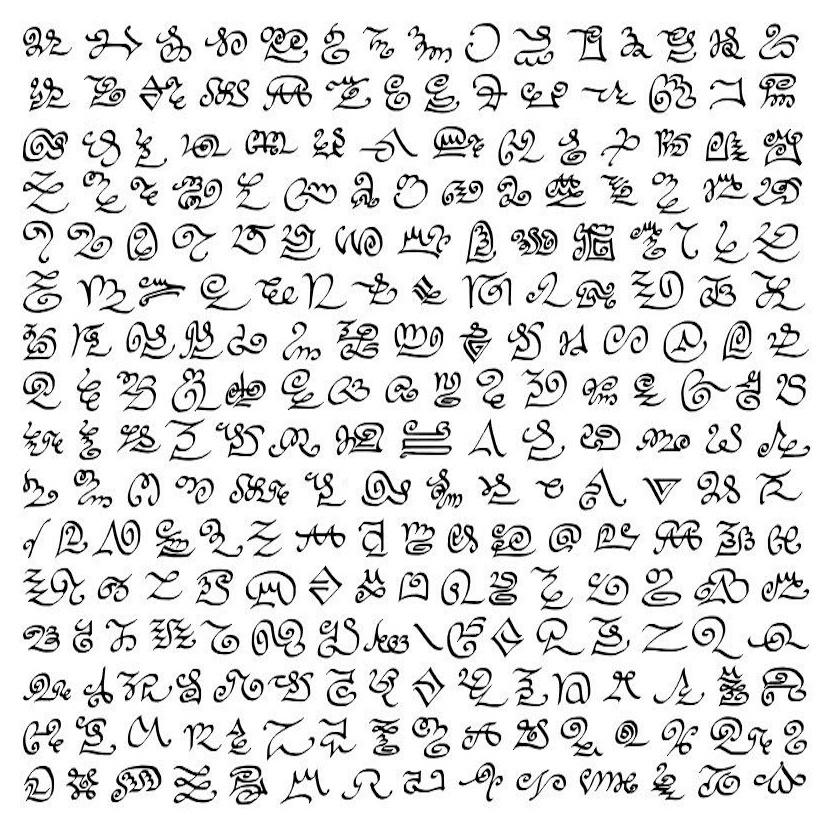-
Posts
201 -
Joined
-
Last visited
-
Days Won
7
Fugax Contrapunctus last won the day on April 9
Fugax Contrapunctus had the most liked content!
About Fugax Contrapunctus

- Birthday July 15
Contact Methods
-
Website URL
https://www.youtube.com/@fugaxcontrapunctus?sub_confirmation=1
Profile Information
-
Gender
Male
-
Occupation
Student
-
Interests
Composition, language learning, philosophy, conlanging and worldbuilding
-
Favorite Composers
J. S. Bach, Scarlatti, Beethoven, Mendelssohn, Brahms, Chopin, Tchaikovsky, Liszt, Mahler, Rachmaninov, Prokofiev, etc.
-
My Compositional Styles
Contrapuntal neo-Baroque
-
Notation Software/Sequencers
MuseScore 3 & 4
-
Instruments Played
Violin, piano
Recent Profile Visitors
5,964 profile views
Fugax Contrapunctus's Achievements
-
Fugax Contrapunctus changed their profile photo
-

Motet a 8 "O Magnum Mysterium" in E-flat major.
Fugax Contrapunctus replied to Fugax Contrapunctus's topic in Choral, Vocal
Indeed. The similarity in timbre of instruments within their respective families often tends to muddle the trajectory of individual lines amidst the density of the texture, as has frequently happened in my keyboard compositions even for just 4 voices. But the human voice still retains that distinct timbral quality to it, somehow capable of preventing its integration into a larger choral whole from forsaking the uniqueness of its sound and the meandering of its melody. A testament, perhaps, to how vocal music was upheld as the most sacred during the Middle Ages and the Renaissance; not just because of the references to the purported sanctity of the natural human voice in the Old Bible and the Gospels, but because its endless versatility and potential in conjoining doesn't undermine the independence of each line nearly as much as it otherwise does for mere instruments. Thomas Tallis himself certainly took this to the absolute non plus ultra with his renowned Spem in alium, and yet, the fact that 40 voices singing simultaneously may still be perceived as individually separate with each listening instance still leaves room for even more ambitious polyphonic endeavours to be produced (although it would certainly be beyond overkill to even try). Thank you kindly as well! Though unfortunately I have bad news concerning the languages supported by the current version of Cantāmus: In any case, I'm sure a real choir would be far more adept at singing in Polish than the vaguely synth-sounding lyric renderings Cantāmus usually provides, though of course such an eventuality would come at a far greater cost. Perhaps an online choir with individual part recordings being carefully timed and assembled together might do the trick. Otherwise, a live premiere with a professional choir would be my best bet. Either that or browsing the Internet for competitors, of which I know none whose lyric rendering quality comes even close to that of Cantāmus. -

Motet a 8 "O Magnum Mysterium" in E-flat major.
Fugax Contrapunctus replied to Fugax Contrapunctus's topic in Choral, Vocal
Greetings Henry! Under normal circumstances, such egregiously positive feedback would have me including several rephrases of "thank you" in my response. In your particular case though, I feel it is only proper that I answer with a wholeheartedly humble 不敢當, and for good reason. Of those among your 6-part compositions I've had the awe-inducing pleasure of listening to, your mastery of complex textures across vast swathes of music is on a completely different level, perhaps even unrivaled, if I may dare. To mention the most prominent example, your String Sextet in G-flat major, does not merely fit the conventional definition of "masterpiece", but rather expands upon it beyond what was conceptually possible in my mind up until that point. Its technical perfection and measured balance of musical aspects excelled over everything I knew when it comes to structural integrity, modulatory prowess, stylistic variety, motivic resourcefulness, contrapuntal-device handling, internal narrative coherence, ...the list just goes on! Given I already wrote back then what was perhaps my lengthiest review ever on this forum, I won't repeat myself too much on the myriad wonders your work ellicited on me and continues to evoke every time I've listened to it since, but one thing I shall mention again: with 8 voices or not, my tiny little compositions are not even worthy of being mentioned remotely on par with such jaw-droppingly all-encompassing artistry in music you have developed and refined to such a great diversity of effects. What I am trying to say is: it means a lot to me to hear that you, whom I consider to be one of the greatest masters in our generation, are pleased with such a comparatively minor piece of mine, if there's even to be any comparison at all between this and your utmost proficiency in counterpoint both innovative and sublime. It may have two more voices than your 6-part compositions, but does it even matter when the brilliance of any of those far exceeds my whole production like a supernova outshining an entire galaxy? In the end, I can't help but appreciate the sheer generosity of your remarks, even if I ultimately feel undeserving of them in the face of the insurmountable magnitude and unparalleled quality of your output, but it is precisely because of such achievements that your words mean so much more to me, almost like the very enbodiment of the kind of composer I aspire to be guiding me along the right path forward. Thank you kindly, Henry. It truly is both an honour and a priceless gift to have thus met your approval. -
Greetings and apologies for my late response. The entire piece has been transposed one whole step upward in order to accommodate for the English Horn's playable range without altering its melodic line, as any other change to the main motif would undermine the periodicity expected of strict canonic imitation. Thank you for your patience in pointing out my mistakes. I hope this last modification has not negatively affected other instrumental or vocal ranges too much, though as far as I can tell every part is feasible now. Otherwise I'll have to apologize to The Sopranos as well. 😅
-

2025 Christmas Music Event!
Fugax Contrapunctus replied to PeterthePapercomPoser's topic in Monthly Competitions
Here's my submission! Perhaps I should have waited till Christmas Eve for its publication, though in the end I reckoned the sooner might as well be the better. P.S.: I wholeheartedly agree with the distressing concerns brought forth by @AngelCityOutlaw regarding the AI-generated music submitted for this event. It should go without saying that allowing AI-generated material to be presented on par with compositions requering hours upon hours of effort and dedication could run the risk of severly undermining the legitimacy and ultimate purpose of these community events, not just on account of the frictions and controversies caused by the presence and promotion of AI-generated content, but also on a more fundamental level which has been thoroughly implied over the course of this discussion. Despite this, I firmly believe those who want to participate and submit their art should not hesitate to do so. Why let so much time, effort and dedication go to waste after creating a work of art that is in any capacity worth far more than mere AI imitations? My take is that we should not be deterred, but rather emboldened in the face of these dire circumstances we are living through, that we may adapt to this unsettling trend and make our art known regardless. In fact, that's precisely why I think it's more important than ever not to refrain from posting our own music, lest we inadvertently pave the way for more of this AI-generated music to claim our place. It is rumoured that the Dead Internet Theory may as well soon become an increasingly encroaching and inexorable reality. By refusing to yield to the tide and sharing more of our own creations, hopefully we might briefly forestall such a harrowing prospect for this tiny little corner of the Internet where so many creative wonders are being posted and discussed every single day. The point is not to force these AI-generated compositions out by decree, but to make it so that the abundant music produced by humans in this forum may flourish beyond the scope of neural networks being used as amoral tools or shortcuts to achieve similar results in appearance, yet severely lacking in personal significance, emotional depth or even a core message capable of steering the course of the compositional process. Banning AI-generated music will not ameliorate the problem at large, but composing music through righteous hardship might as well be the only substantial antidote against the proliferation and normalization of this kind of content. That being said, I'm certain this must be quite a difficult point of contention for the forum's staff to deal with and try to find a meaningful solution for, so I won't comment further on the subject matter. In any case, I hope whichever resolution or agreement is reached on this issue will allow the course of these community events to carry on peacefully and with respect towards the time, effort and dedication proportionally invested into each submission. It is good to know that this matter is being seriously discussed by staff and high-ranking members alike, and as such I would like to thank @Henry Ng Tsz Kiu and @PeterthePapercomPoser among others for their dutiful labour in calmly trying to sort out things amidst the heat of the debate. -
In anticipation for this year's Christmas Eve, I decided to try my hand at writing another religious motet. Considering the fact that the bulk of this piece has been composed merely in the span of yet another insomnia-driven bout of inspiration, perhaps its modest length may as well be a reflection of missed potential, as I reckon it could have been developed into a more complex structure should its latter half not have got stuck on a protracted pre-cadential spiral. Once again, just as with my previous vocal fugue, the main goal of this composition was to make the text as intelligible as possible (specially taking into account the musical history of such a well-known textual setting), that is, within the confines and constraints of an 8-voice motet. This has ultimately led to some interesting contrapuntal oddities which, despite the preservation of independent voice-leading and thorough avoidance of melodic and harmonic blunders, have produced a number of somewhat unorthodox unresolved dissonances throughout. Nevertheless, I believe such contrapuntal licenses are more than sufficiently justified given the scope of this piece, as well as the sheer volume and density of its texture all the way through. This piece was specifically conceived as a submission for this year's edition of the forum's Christmas Music Event, and shall be presented accordingly in its dedicated thread. YouTube video link:
-
Greetings Henry. Indeed I had expected the similarities between the primary subject of BWV 1080 and the ones used here would end up seeming far too glaring. Perhaps it may serve as a testament to the versatile simplicity of this kind of subjects, whence far greater complexity may be properly built upon. In any case, another fair reminder of Bach's genius and the omnipresent influence of his fugal developments. With that out of the way, I must apologize for not replying sooner with regards to the recent calamity. I wholeheartedly hope none of your acquaintances were directly affected by the fire. I initially hesitated to properly dedicate it to the victims due to its magnitude and devastation, and especially because of the gruesome suffering, mourning, affliction and grief so many families and friends of the deceased must be going through, for which this humble composition of mine could never properly stand up to provide nearly enough consolation. However, I should have realized sooner that not acknowledging it at all would be far more insensitive and disrespectful towards the victims and their loved ones. As such, albeit rather late, the dedication has been included in the score document. My utmost condolences. 節哀順變。
-
And I thought those low D-sharps on the basses were far too excessive! I couldn't even bring myself to sing below a very awkward-sounding E despite technically being a baritone. I wonder how potent of a voice a deep bass singer must have for such a B-flat to be remotely audible as pitch instead of pure vibration. To me, such extended ranges seem far more extreme than the usual alto-contralto range, which I believed is usually cited to reach down to an F below the staff. In any case, the concern is understandable. This fugue was originally set for D minor, as much of a nod to Mozart's heavy association of death with this particular key as a matter of convenience in order to adhere to the standard ranges for vocal music, which as we know often tend to require more conservative estimates in choral settings. Unfortunately the digital choir soundbanks I'm using struggled far more just a semitone above in certain passages, with certain octave leaps in the tenor part sounding especially screechy, so in the end I was forced to choose the lesser flaw and thus had to resort to lowering the whole piece to its current key. I hesitate to even call it a double fugue, as what might appear as the 2nd subject is in fact merely derived from the first, and I certainly would not dare label it a triple fugue, despite the relatively minor changes undergone by the subject that would normally not be explained by a conventional tonal answer. The stretto treatment is undergone first by what could be considered the 2nd subject following its own development section, and only then does the stretto for the original subject come about, thus helping cement an overarching ABA' superstructure that unifies the piece as a whole beyond mere exposition, development, stretti and codae in cycling motion. As for the Christmas Music Event, perhaps I might be able to submit a proper piece before the deadline. As of lately I've been considering a 5-part motet rendering of "O Magnum Mysterium", though I may consider other related texts to the same effect. In any case, I'll let you know in the dedicated thread if I manage to finish anything suitable in time. Thank you for your review!
-
After undergoing plenty of struggle to find a proper textual setting capable of matching the rhythmic patterns of this vocal fugue, I decided to settle for an altered version of the "Libera me" movement commonly found on Requiem masses. Despite the minor changes required for the text to fit the subject of the fugue, its treatment throughout has been a conscious attempt to make it as audibly intelligible as possible, as opposed to the vast majority of my previous vocal works, where any regard for the text was completely secondary to the music. This composition, as well as its harrowing message, has been dedicated in memoriam to the victims of the Wang Fuk Court fire, which tragically befell Hong Kong on November 26th. May their souls find peace and eternal rest. 請安息吧! YouTube video link:
-
Wieland Handke started following Fugax Contrapunctus
-
Among all the other previously published canons of its type, this one might as well have turned out to be the most demanding to perform, in no small part due to the choir's conventional maximum ranges being reached in at least three voices, including both soprano (C6) and bass (E2), making it no small feat to sing. The main lyrics would roughly translate from Latin to English as follows: "In the direst of circumstances the true heart of men shall sing with great hope of leaving behind a memorable life. Even death can conquer those whose memory lies in the glory of their good deeds." The coda, as per usual, reinforces the core message in a variety of ways. YouTube video link:
- 1 reply
-
- 3
-

-
As the third installment in my enharmonic perpetual canon cycle, this one follows a procedure nearly identical to that of the first one and is quite similar in duration as well. The lyrics (once again, in Latin) sung by the choir translate as follows: "Change is inevitable in all things. Everything flows in the balance of those who are tempestive." As with the previous installment, the coda further drives the meaning to greater clarity and realization. YouTube video link:
-
Based on the same core concept as the last two canons, this one took roughly under four hours to complete (as time seems to fly once I finally get inspired) and is intended to incapsulate the essential technique employed in these more recent compositions with a greater measure of brevity and conciseness involved, for perhaps three minutes of the same nonstop iterations (as was the case in the previous one) may have turned out quite a bit too repetitive, I regret. YouTube video link:
-
The basic framework for this canon has been in the works for more than a month now, as the technique I employed in the latest one in order to have all voices enter in every diatonic transposition of the same motif turned out to be contrapuntally insufficient. This time, in order to account for more viable ranges both in instrumental and choral settigs, I reduced the number of voices to 6, even though the core parameters still remain: every voice enters one fifth below the previous one, and instead of diatonic transpositions being treated as though in the same key, every transposition is essentially a real answer throughout, with the integrity of the main theme's melodic intervals kept intact. This entire setup (alongside certain variations when it comes to the disposition and order of entry of each voice so as to accommodate for the instrumental and vocal ranges of the woodwinds and the choir respectively) gives rise to a distinctly chromatic environment of constant modulation leading to a 2nd iteration of the same canon one tritone higher, at which point it keeps rising to meet the octave above and every voice alternates a divisi to prevent the melodies from climbing even higher and thus, yielding a perpetual canon (with a coda at the end for good measure). Lastly, the lyrics in Latin sung by the choir are intended as placeholders with thematic and allegorical significance towards the spirit of the canon itself: "Rosea surgit aurora, Sol fulget in caelo - Aurea cadens vesper stellarum tegit noctem", which would roughly translate to "Dawn rises rosy, the Sun shines in the sky. Evening falls golden, covering the night in stars." Not profound by any means, but simple enough to reflect the perpetual motion of the canon as an allegory for the unending passage of time. YouTube video link:
-
As stated in the title, this perpetual canon follows all diatonic intervals of the key of B-flat major, as every entry begins on a different degree of the major scale as a tonal transposition of the canon's theme. Since every voice enters while alternating between strong and weak beats as displaced accents, this canon could also be described as "per arsin et thesin", so to speak. Enjoy! YouTube video link:
- 1 reply
-
- 1
-

-

Canon a 4 for String Quartet in F minor.
Fugax Contrapunctus replied to Fugax Contrapunctus's topic in Chamber Music
Precisely because of the issues presented by the MuseScore 4 soundbanks I had to remove the cello's initial staccato. It made that single quarter note sound way too strong and became unwieldy when trying to get the playback functionalities to work properly. In any case, thank you kindly for all your feedback, including that which you gave for my other relatively recent compositions.


.thumb.png.8b5b433a341551e913a34392660bc95b.png)





.thumb.png.1e2763f479362bbb522da50d31ef2e50.png)




